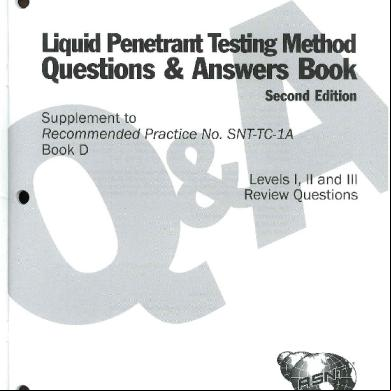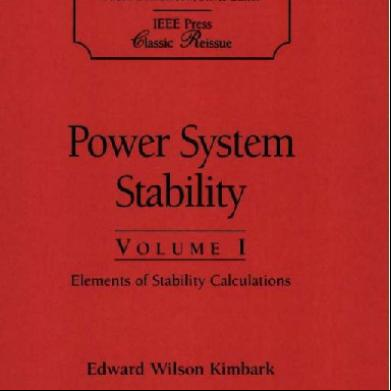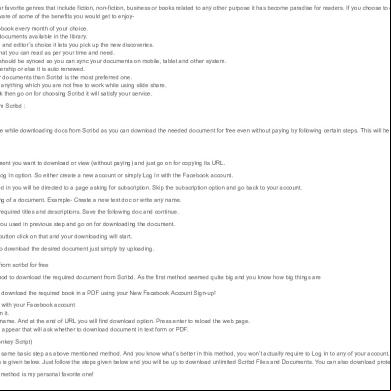Asnt Level 3 Ut Exam 4xz3w
This document was ed by and they confirmed that they have the permission to share it. If you are author or own the copyright of this book, please report to us by using this report form. Report 3b7i
Overview 3e4r5l
& View Asnt Level 3 Ut Exam as PDF for free.
More details w3441
- Words: 482
- Pages: 1
First and foremost, I prepared for PAUT and TOFD, unfortunately there is no Questions on it Second important thing, there are many question on Composites, mostly on scanning technique for Composites As usual many question of Immersion testing including Eco’s identification on the screen I am from oil and gas field , doing UT for Welding all the Time, but in Exam Paper there was not many question on UT for welding whereas Most of the questions are from Forging( around 7to 8) In that only on the forging burst there was at least 5 questions including how the defect look like in UT Screen, How do you scan for Forging Burst(circumferential or axial or something Like That ) There are few questions on casting defects as well such as porosity After came back from exam , I heighted the question and problems which I encountered in the exam There were almost 25 questions on calculations and there is problem on each and every basic formula Including tandem techniques, offset for immersion testing of pipes, Like X=(T-D)tanϴ There are some general questions which are based on commonsense As usual there are many question on relationship between variables such as frequency, probe dia , pulse length Etc. The procedure is AWS D1.1 , 2 tables but the scanning severity is something new If you see addendum title, in your procedure, please look at it carefully, in my case , they have given some calibration procedure in the procedure and it was changes in the addendum, the same changes were asked in the exam The procedure is rather lengthy, almost 15 pages, I dint read it fully and I don’t recommend it even, unless if you have plenty of time There are less than 10 questions on the procedure, remaining are direct referring to some fig or table in the procedure Lastly there were some basic formula given in the reference book, but I sincerely recommend all of you to memories formula I have received most of the questions from angle beam testing, immersion technique, welding, castings, forgings (mainly on defect identification), pulse rate (PPS), resonance testing etc. There were few questions (around 5 to 6 questions) from instruments. I did not have many questions from composites. Most of the questions were on identifying the welding a defects based on metal path distance. Time management is very important and it is recommended to practice more problems. Because while practicing the numerical problems, you will automatically learn the concepts. UT is more about concepts and questions are framed to roam around the concepts only. I am from Aerospace industry and we don't very frequently use UT for welding. But I have received decent number of questions from welding. I have got around 8 questions from procedures (with AWS D1.1 table), so it is also advisable to be very familiar with AWS D1.1 for UT testing.










